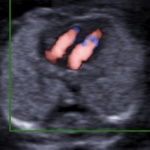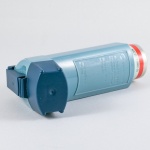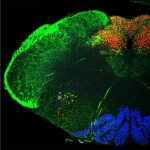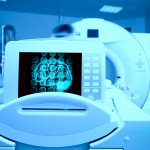
Sponsored • TrueVue
Philips ultrasound innovations provide lifelike 3D images
Philips TrueVue, GlassVue, aReveal A.I. and TouchVue improve workflow and diagnostic confidence, enhancing the connection between clinicians and their patients.

Philips TrueVue, GlassVue, aReveal A.I. and TouchVue improve workflow and diagnostic confidence, enhancing the connection between clinicians and their patients.

Today, many congenital heart defects can be diagnosed in the unborn child – and even treated in utero. Monique Haak (46), gynaecologist-perinatologist and fetal surgeon at Leids University Medical Center (LUMC) in Leiden, The Netherlands, is an expert in the diagnosis and surgery of fetal heart defects.

Study shows a simplified examination can be performed routinely on low-risk populations during the first trimester of pregnancy.

Respiratory tract infections in young children are linked to an increased risk of asthma and worse lung function in later life, according to new research to be presented at the European Respiratory Society International Congress.

A Spanish team has, for the first time, successfully placed a pulmonary valve using catheterisation through the hepatic vein in a paediatric patient. Specialists believe this type of intervention could become an interesting alternative when traditional access points are not available.

Genetics and research, transition and aging, activities and participation, pain orthopedics and physiotherapy as well as new treatment options...

A genetic study identifies neuronal circuits responsible for ultrasonic calls uttered by mouse pups. The cries of human babies may well depend on similar connections, which could also be impaired in speech disorders.

Although dementia is most often seen in adults, childhood or adolescent dementia does occur. A team of researchers from the University of Würzburg believes that established therapeutic drugs might be effective against childhood dementia.

The U.S. Food and Drug Administration cleared the first MRI device specifically for neonatal brain and head imaging in neonatal intensive care units.

Many children with autism spectrum disorder experience significant gastrointestinal issues, but the cause of these symptoms is unknown. Professionals in the medical community have suggested a potential link between diet and gastrointestinal issues related to autism. Now, researchers from the University of Missouri School of Medicine have found that diet is not a contributing factor in these…

Professionals in the field of children’s cardiology will hold their world congress in FCB’s Camp Nou, Barcelona, Spain from the 16th to the 21st of July 2017. As part of the congress and for the first time, a special symposium will unite leading experts in the field of sports cardiology to discuss the heart health of the sports stars of the future.

Bracco Imaging S.p.A., a company in the diagnostic imaging business, announced today that its contrast agent SonoVue (sulphur hexafluoride microbubbles) is the first ultrasound contrast agent to obtain approval in the European Union for its use in ultrasonography of the urinary tract for the evaluation of suspected or known vesicoureteral reflux in pediatric patients.

In a vulnerable system the most vulnerable users suffer most – and in the German hospital surgical care system the most vulnerable are children – and, above all, immigrant children.

Children with cancer could be spared dozens of doses of general anaesthesia by projecting a video directly on to the inside of a radiotherapy machine during treatment, according to research presented at the ESTRO 36 conference.

A unique womb-like environment designed by pediatric researchers could transform care for extremely premature babies, by mimicking the prenatal fluid-filled environment to give the tiniest newborns a precious few weeks to develop their lungs and other organs.

A team of UCLA bioengineers has demonstrated that its technology may go a long way toward overcoming the challenges of treatment for acute lymphoblastic leukemia, among the most common types of cancer in children, and has the potential to help doctors personalize drug doses.

After nearly two decades of unsuccessful attempts, researchers from the University of Chicago Medicine and the Cincinnati Children’s Hospital Medical Center have created the first mouse model for the most common form of infant leukemia. Their discovery could hasten development and testing of new drug therapies.

The Sony Healthcare Solutions Team supported Alder Hey on its journey to a new site designed with the children it treats in mind, complete with new ORs and the latest technology throughout.

For the first time, fetal medicine experts have performed prenatal heart surgery to remove a life-threatening tumor, called intrapericardial teratoma. The patient, who underwent the operation at 24 weeks of gestation while in his mother’s womb, is now a healthy three-year-old preschooler. “We have shown that we can accurately diagnose and provide a prognosis for this rare condition in utero,…

NIBIB-funded researchers at the University of Washington have pioneered an approach to image functional activity in the brains of individual fetuses, allowing a better look at how functional networks within the brain develop. The work addresses a common problem of functional MRI; if the subject moves during the scanning, the images get distorted.

A Northwestern University research team has developed a 3D printable ink that produces a synthetic bone implant that rapidly induces bone regeneration and growth. This hyperelastic “bone” material, whose shape can be easily customized, one day could be especially useful for the treatment of bone defects in children.

Researchers at The University of Manchester have unlocked the potential of a new test which could revolutionise the way doctors diagnose and monitor a common childhood Leukaemia. Dr Suzanne Johnson says that cancerous acute lymphoblastic leukaemia cells produce and release special structures that can be traced in the blood. The discovery could have major implications on the diagnosis, monitoring,…

There are a couple strains of herpes so common that researchers estimate 90% of the human population have them. These strains, human herpes 6 and human herpes 7, usually do not cause severe symptoms when people acquire them. But researchers know that under certain circumstances, dormant herpes viruses in the body can unexpectedly come roaring back and cause complications not typically associated…

The first known household survey examining the collateral harm to pregnancy services in areas affected by the West African Ebola epidemic suggests a significant slide backwards in child and maternal health. The study, conducted in Liberia, points to the deep disruptions caused by the Ebola epidemic — even in parts of the country with relatively limited transmission.
A study published by The BMJ provides more details of an association between Zika virus infection in the womb and a condition known as arthrogryposis, which causes joint deformities at birth, particularly in the arms and legs.